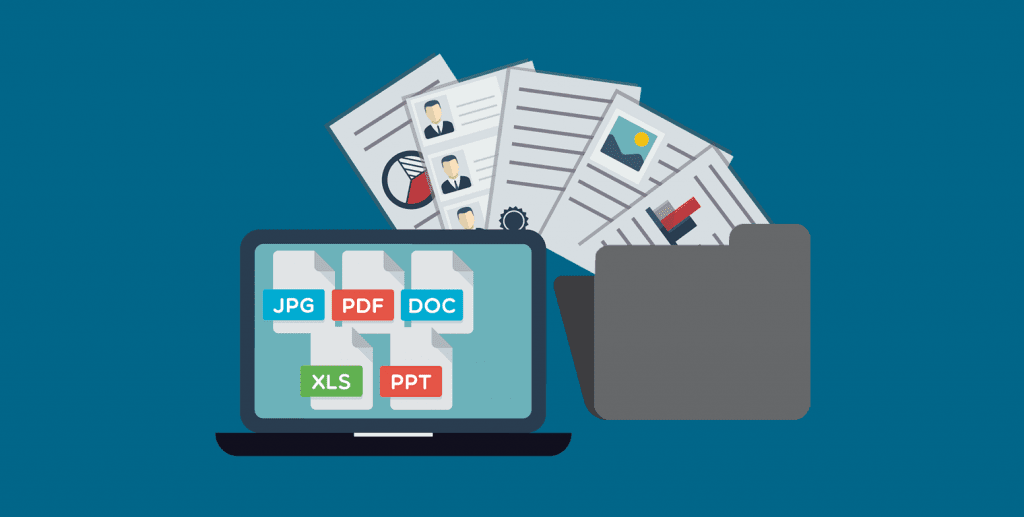Real Advantage of Paperless Office

Businesses don’t realize that the time spent looking for documents costs them dearly and is detrimental to their business (31% of respondents said that if they weren’t looking for documents, they would be spending time on business development). There are many benefits to a paperless office, some of which you might not even have thought about.
Pragmatically speaking, a paperless office doesn’t exist. Paper will always find its way into an organization. Vendors will send contracts. Customers will send purchase orders. Potential employees will bring resumes.
“Going paperless”—eliminating paper usage and managing documents in the cloud or web-based filing systems—sounds hip, smart, and eco-friendly. However, the reality is that paper still permeates the modern office. And businesses have been slow to start the transition.
Even though this is considered a myth, almost all organizations are aiming for going paperless nowadays.
A few of the advantages of going paperless
Business development
With the time saved, executives can spend their time more productively, on developing the business. According to the YouGov survey, 30% of business managers and directors would spend the time they save on business development.
Better customer service
A digital document management system allows you to access all customer data, retrieving information such as customer orders and documents, allowing your business to proactively provide customer service, and respond to inquiries faster.
E-mail efficiency
A digital document management system that communicates with your server-based email system will allow you to save emails into the system just like any other document, making it easy for you to search your email history.
Return on investment
Businesses do not need to spend a lot of capital in order to have a digital document management system. There are cost-effective choices that will allow you to see a return on investment in as little as 6 months.
Greater document security
The security of the information stored in digital format is much greater than the security of the documents that are filed in paper. In addition to the fact that it’s easier to restrict the access to confidential information stored in digital format, it is also easier and less expensive to make backups, so that if files get lost or a data theft occurs, it’s possible (and much easier) to retrieve the information.
Meanwhile, documents on paper are much more exposed to accidents – leaks, floods, fires – and is much more easily accessible to third parties.
Less overhead costs
Digitizing documents has a direct impact on cost reduction. Not only because companies don’t need to buy as much paper as before, but because it also saves on maintaining printers and purchasing spare parts.
On the other hand, if all of a company’s documents are digitised and can be sent by email, there is no need to spend on mailings anymore.
Less space dedicated to file storage
Freeing the space dedicated to filing physical documents is also one of the main advantages of a paperless office. A digital document management system allows companies to archive everything in the cloud or on private company servers.
The space that is saved can be dedicated to expanding offices or other uses that bring more value to employees, such as a rest area to socialize with colleagues.
Automatic audit trail
Increasingly, businesses need to adhere to strict guidelines on compliance and need to store records for many years. With a digital document management system, there are no limits to the amount of documents you can store, and every document will have a unique number –automatically generating an audit trail. This also gives the ability to make changes to documents and still keep the original, helping with compliance and audit guidelines.
Simplicity
With a digital document management system, you can simplify many business processes. Users can action or authorise tasks and transfer data with the touch of a button. Ordering goods and authorising invoices are just two of the best examples of daily tasks that become more efficient when done digitally.
What did we conclude?
Looking at all of the above-mentioned advantages, more and more companies are being driven to eliminate the use of paper in all their business processes.
At Pericent BPM and BPM Software, we’re already a paperless office, and we firmly believe in the benefits of document scanning and digital document management systems.
We are on a mission to help every organization become a part of the digital world by being a paperless office with the use of docEdge DMS.
If you would like to try docEdge for digitizing your documents and managing them online, request for a demo and try it free for 14 days.
Posted in: Document Management System
Leave a Comment (0) →

